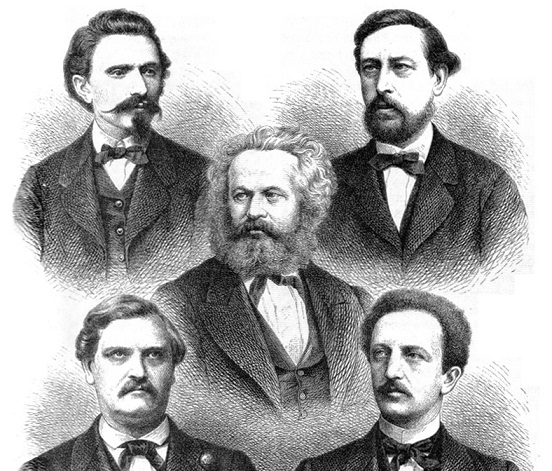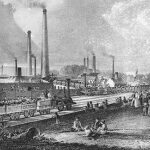
In the age of kings and industrial capitalists, a new political force emerged in Germany — one that spoke for factory workers, miners, printers, and the millions caught in the whirlwind of industrialization. The rise of socialism and the SPD in the 19th century transformed Germany’s social and political landscape. It gave voice to those previously shut out of power and built the foundation for modern labor laws and democratic reform.
More than just a party, the Social Democratic Party of Germany (SPD) became a movement – uniting theory and action, idealism and organization. It brought together thinkers, workers, and reformers who believed that society could be fairer, more humane, and more just.
This article explores the roots of socialism in Germany, the creation and growth of the SPD, and the social changes it helped bring about during one of the most dynamic periods in German history.
Origins of German Socialism
The roots of socialism in Germany can be traced to the early 1800s, when industrialization began to reshape German society. Peasants became factory workers. Cities expanded rapidly. Poverty, child labor, and unsafe working conditions were everywhere. Out of this harsh new world, ideas of collective rights and social justice took hold.
Philosophers and economists like Karl Marx and Friedrich Engels, both German-born, criticized capitalism and proposed a revolutionary alternative. In 1848, they published The Communist Manifesto, calling on workers to unite and challenge the existing order. Though the revolutions of 1848 failed, the manifesto inspired a generation of political activists.
In the decades that followed, socialist ideas began to spread in Germany – through newspapers, trade unions, and working-class associations. Two key groups emerged:
- The General German Workers’ Association (ADAV), founded by Ferdinand Lassalle in 1863
- The Social Democratic Workers’ Party (SDAP), founded by August Bebel and Wilhelm Liebknecht in 1869
Both sought to improve conditions for workers, though they differed on methods and ideology. The ADAV favored collaboration with the state, while the SDAP leaned more toward Marxist principles.
The Birth of the SPD
In 1875, the ADAV and SDAP merged at the Gotha Congress, creating the Socialist Workers’ Party of Germany – which would later become the SPD. The new party adopted a platform that blended Marxist ideals with practical reform demands, including:
- The right to vote
- Free public education
- An eight-hour workday
- Health and accident insurance
- The end of child labor
- Legal equality for all citizens
The Gotha Program, while criticized by Marx for being too moderate, helped the new party appeal to a broader audience. Within a few years, the SPD became a serious political force, winning seats in the Reichstag and building a nationwide network of supporters.
Repression and Resistance – The Anti-Socialist Laws
The growing influence of the SPD alarmed conservative elites and the imperial government. In 1878, after two failed assassination attempts on Kaiser Wilhelm I (not linked to the SPD), Chancellor Otto von Bismarck pushed through the Anti-Socialist Laws.
These laws:
- Banned socialist newspapers and organizations
- Disbanded SPD-affiliated groups and unions
- Permitted police surveillance and censorship of socialist meetings
Despite this crackdown, the SPD adapted. Leaders went into exile. Supporters organized in secret. Candidates ran for office as independents. Rather than destroy the party, the laws made it stronger and more resilient. In every Reichstag election during the repression period, SPD vote totals grew.
In 1890, the Anti-Socialist Laws were repealed – and in that same year, the SPD became the largest political party in Germany.
Reform Versus Revolution
With growing political success came internal debate. What should socialism in Germany look like? Could change be achieved through democratic means – or was revolution inevitable?
The party split into two main factions:
- Revisionists, led by Eduard Bernstein, believed in gradual reform through elections and legislation
- Orthodox Marxists, like Karl Kautsky, insisted that capitalism could only be overcome through revolution
This debate shaped the SPD’s identity. In public, it adopted a revolutionary platform. But in practice, it focused on parliamentary work, trade union support, and community programs. The SPD built an entire subculture around itself – with workers’ libraries, sports clubs, choirs, women’s groups, and youth leagues.
By the turn of the 20th century, the SPD was more than a political party. It was a way of life for millions of Germans.
Social Achievements and Political Impact
Even before gaining power, the SPD helped change Germany. Its presence forced other parties to consider social issues. It pressured Bismarck to introduce the world’s first welfare programs, including:
- Health insurance (1883)
- Accident insurance (1884)
- Old-age pensions (1889)
Though Bismarck intended these reforms to weaken socialist appeal, they were landmark policies that benefited millions and set a model for future governments.
The SPD also helped bring labor issues to the forefront of national politics:
- Advocating for safer workplaces
- Pushing for restrictions on working hours
- Demanding education access and housing reforms
- Fighting for press freedom and civil rights
Even where it could not pass laws, the SPD educated workers, gave them a political voice, and helped foster a sense of dignity and solidarity.
Women and the Socialist Movement
Women faced steep barriers in 19th-century Germany. They could not vote, hold public office, or even join political parties until 1908. But within the SPD, women found space to organize and agitate for change.
Clara Zetkin became one of the most influential figures in socialist feminism. She campaigned for:
- Equal pay
- Maternity protections – and childcare support
- Legal rights for working women
- Universal suffrage
She also helped establish International Women’s Day, first celebrated in 1911. Under Zetkin’s influence, the SPD became a leader in the fight for women’s rights – ahead of many liberal and conservative parties of the time.
Challenges, Critics, and Internal Tensions
The SPD’s success drew fire from all directions:
- Conservatives feared it would destroy tradition and property rights
- Radicals accused it of abandoning true revolution
- Monarchists and military elites saw it as a threat to national unity
Within the party itself, tensions persisted over strategy. Some leaders prioritized cooperation with trade unions and local reforms. Others argued that the SPD risked becoming too comfortable with the system it had pledged to overthrow.
These tensions would eventually come to a head in the 20th century, especially during World War I and the German Revolution of 1918. But in the 19th century, the SPD maintained unity – held together by its mission to empower workers and reshape society.
Legacy of the 19th-Century SPD
By 1900, the SPD was the largest socialist party in the world. It had:
- Millions of supporters
- Hundreds of newspapers and local offices
- A powerful presence in the Reichstag
- An unmatched network of unions, cultural clubs, and educational programs
The party’s legacy includes:
- The introduction of labor rights into German law
- The normalization of democratic opposition in imperial politics
- The creation of a strong welfare tradition
- The emergence of mass political participation
Even as it evolved in the 20th century, the SPD remained shaped by its 19th-century roots – by the workers who demanded more, the women who refused silence, and the thinkers who imagined a better world.
The rise of socialism and the SPD in 19th-century Germany marked a revolution in more than name. It changed how politics worked. It changed who had power. And it changed what people believed they could achieve together.
From underground meetings to packed rallies, from banned newspapers to Reichstag speeches, the SPD gave voice to those long ignored. It laid the foundation for modern democracy in Germany – and for the social rights that many now take for granted.
Explore further:







